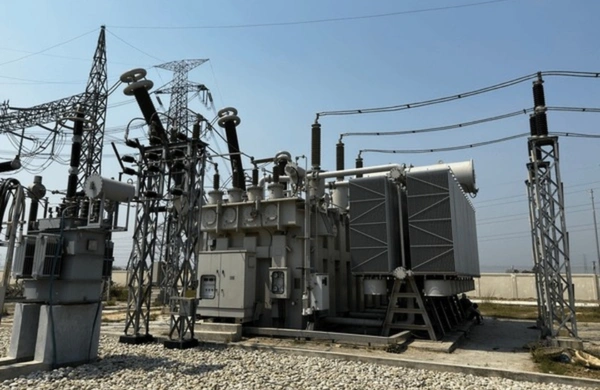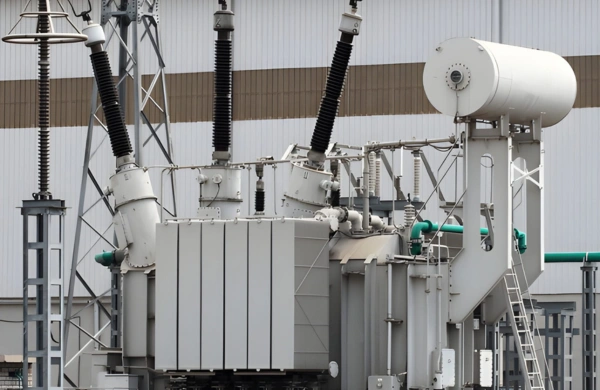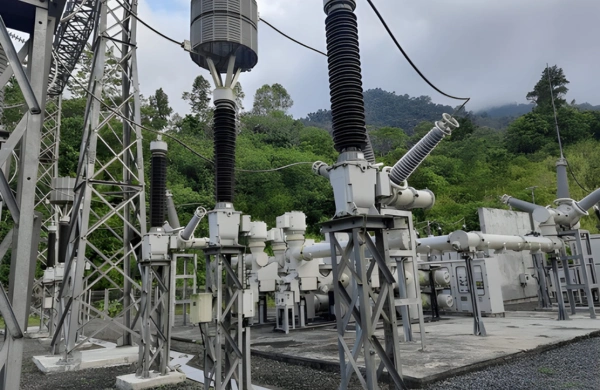Introduction
In industrial and utility power systems, voltage conversion is essential for efficient and safe energy use. Step down transformers perform this critical function — reducing high transmission or distribution voltages to usable levels for industrial equipment, commercial buildings, and residential grids.
Whether it’s powering heavy machinery in manufacturing plants or sensitive electronics in control rooms, step down transformers protect systems from overvoltage, improve energy efficiency, and ensure operational safety.
Know About Durable Step Down Transformers for Industrial and Utility Use
Zetwerk, a global leader in transformer manufacturing, produces high-performance step down transformers engineered for long-term reliability, thermal stability, and precise voltage regulation. Built to IEC, IEEE, and ANSI standards, Zetwerk’s transformers deliver performance consistency across North American industries and utilities.
1. Role of Step Down Transformers in Power Distribution
Electricity generated at power plants or renewable stations is transmitted at high voltages to minimize losses. However, most end-use applications require much lower voltages. Step down transformers bridge this gap — converting high-voltage power into the lower voltages suitable for safe industrial and commercial use.
Primary functions include:
- Reducing 33 kV, 11 kV, or 6.6 kV to secondary levels like 415 V or 240 V.
- Providing electrical isolation between distribution lines and load equipment.
- Stabilizing power supply across variable loads.
- Protecting sensitive equipment from electrical surges.
Zetwerk’s transformers are optimized for continuous operation in harsh industrial environments, ensuring voltage stability and protection for critical systems.
2. Design and Construction Excellence
The reliability and efficiency of a step down transformer depend on its construction quality and materials. Zetwerk designs every transformer with precision, focusing on electrical performance, mechanical integrity, and heat management.
Core:
Built from high-grade CRGO steel laminations or amorphous metal, offering high magnetic permeability and low hysteresis loss. The core is precision-stacked to minimize magnetostriction and noise.
Windings:
Copper or aluminum windings are wound using automated machines to maintain uniform tension and exact turn ratios. Conductors are insulated with epoxy varnish or Nomex material to withstand thermal and mechanical stress.
Insulation System:
Zetwerk uses resin-impregnated, paper-oil, or cast resin systems depending on application voltage and environmental conditions. These systems ensure long-term dielectric reliability.
Enclosure:
Transformers are housed in robust IP-rated enclosures — available in mild steel, stainless steel, or aluminum — suitable for indoor and outdoor use.
Cooling:
Cooling configurations include:
- AN (Air Natural) for compact, low-power installations.
- AF (Air Forced) for higher ratings.
- ONAN / ONAF (Oil-cooled) systems for heavy-duty industrial applications.
3. Electrical and Mechanical Performance
Zetwerk’s step down transformers deliver consistent electrical performance under demanding load and environmental conditions.
Typical specifications:
- Primary Voltage: Up to 33 kV
- Secondary Voltage: 120 V to 690 V
- Frequency: 50 Hz or 60 Hz
- Efficiency: ≥98.5% for industrial-grade designs
- Voltage Regulation: ±1.5% typical under full load
- Insulation Level: BIL up to 95 kV
- Thermal Class: F (155°C) or H (180°C)
Each unit undergoes finite element analysis (FEA) for electromagnetic field, mechanical stress, and thermal performance, ensuring reliable long-term operation.
4. Industrial Applications of Step Down Transformers
Step down transformers are widely used across industries and infrastructure where electrical power must be adapted for diverse applications.
Key sectors include:
- Manufacturing plants: Powering motors, compressors, and control panels.
- Oil and gas facilities: Driving pumps, drilling rigs, and processing systems.
- Utilities and substations: Voltage reduction for local distribution networks.
- Data centers: Providing clean, isolated power for critical IT systems.
- Infrastructure and transport: Supplying lighting, HVAC, and signaling networks.
Zetwerk’s transformers are engineered for continuous service, low noise, and minimal maintenance, making them ideal for mission-critical environments.
5. Dry-Type vs Oil-Immersed Step Down Transformers
Zetwerk manufactures both dry-type and oil-immersed step down transformers, each suited to different operating conditions.
Dry-Type Transformers:
- Use resin or varnish for insulation, eliminating the need for oil.
- Preferred for indoor, enclosed, or fire-sensitive environments.
- Offer minimal maintenance and high safety.
- Common in hospitals, commercial buildings, and industrial control rooms.
Oil-Immersed Transformers:
- Use insulating oil for cooling and dielectric strength.
- Provide higher overload capacity and longer lifespan.
- Suited for outdoor, utility, and heavy-duty industrial applications.
Zetwerk helps customers choose the right type based on power rating, ambient temperature, and installation environment.
6. Safety, Protection, and Compliance
Safety and reliability are essential in transformer design. Zetwerk’s step down transformers are built with multiple protection and monitoring systems to ensure long-term field performance.
Standard safety features:
- Thermal sensors and protection relays for temperature monitoring.
- Pressure relief devices to prevent tank rupture.
- Buchholz relay for gas detection in oil-immersed transformers.
- Electrostatic shielding to reduce electrical noise.
- Grounding terminals for personnel safety.
- Fire-retardant materials and arc-safe design.
Each transformer complies with IEC 60076, IEEE C57.12, and ANSI standards. For North American projects, Zetwerk provides UL- and CSA-compliant designs upon request.
7. Testing and Quality Assurance
All Zetwerk transformers undergo a comprehensive testing and quality assurance process to validate performance and safety.
Routine tests include:
- Winding resistance and ratio verification.
- No-load and load loss measurements.
- Insulation resistance and dielectric tests.
- Polarity and phase displacement verification.
- Temperature rise and sound level testing.
Type and special tests include:
- Impulse voltage withstand.
- Short-circuit endurance.
- Partial discharge measurement.
- Seismic and vibration testing for field durability.
Test reports and quality certifications are provided for every unit, ensuring traceability and compliance.
8. Custom Engineering and Design Flexibility
Every project has unique electrical and mechanical requirements. Zetwerk’s engineering team offers tailored step down transformer solutions to match project specifications.
Customization options include:
- Voltage ratio: From low voltage (LV) to medium voltage (MV) systems.
- Tap changer: On-load or off-circuit for voltage regulation.
- Mounting style: Floor, wall, pole, or skid-mounted.
- Enclosure rating: IP23 to IP65 for indoor or outdoor use.
- Winding material: Copper or aluminum based on performance and cost.
- Cooling configuration: Natural or forced air/oil systems.
Each transformer is designed using advanced modeling tools to ensure electrical precision and mechanical integrity.
9. Zetwerk’s Manufacturing and Export Capabilities
Zetwerk’s transformer manufacturing ecosystem integrates advanced engineering, automation, and quality control.
Key manufacturing highlights:
- Automated core cutting and stacking for minimal losses.
- Precision coil winding and vacuum impregnation.
- Oil filtration and degassing for purity and dielectric strength.
- Computer-controlled curing for resin-cast units.
- Automated testing with data logging and analysis.
Zetwerk’s manufacturing facilities are ISO 9001, ISO 14001, and ISO 45001 certified. Export-ready packaging, labeling, and documentation ensure compliance with North American import standards (UL, CSA, and IEEE).
10. Supporting North American Utilities and Industries
Zetwerk supplies step down transformers to OEMs, EPCs, and utilities across North America for applications ranging from industrial plants to grid substations.
Key advantages:
- Compliance with IEC, IEEE, ANSI, and CSA standards.
- Scalable production for single or bulk orders.
- Custom-engineered solutions for renewable, automation, and heavy industry.
- Predictable lead times and on-time delivery.
- Comprehensive project documentation and technical support.
By combining technical precision, efficient logistics, and strong engineering support, Zetwerk ensures reliable transformer supply and lifecycle value for North American clients.
Conclusion
Step down transformers are fundamental to every reliable power system — ensuring safety, voltage stability, and equipment protection across industries. From heavy manufacturing to modern utilities, these transformers enable efficient energy utilization while minimizing downtime and risk.
With complete in-house manufacturing, customization flexibility, and proven North American supply capability, Zetwerk stands as a trusted partner in advancing safe and efficient industrial and utility power systems.
FAQs
a. It reduces high-voltage supply to lower, usable levels for industrial, commercial, and residential systems.
a. All units comply with IEC 60076, IEEE C57, ANSI, and CSA standards.
a. Zetwerk offers air-cooled (AN/AF) and oil-cooled (ONAN/ONAF) configurations.
a. Yes. Transformers can be engineered for specific voltages, frequencies, and environmental conditions.
a. Yes. Weatherproof enclosures and corrosion-resistant coatings ensure long outdoor service life.









